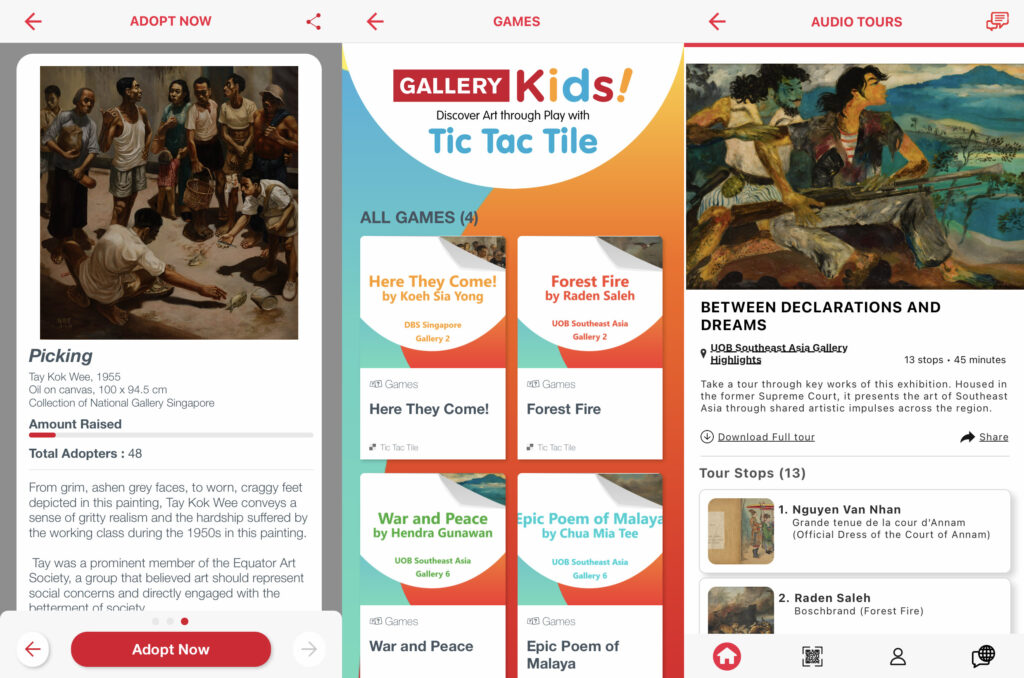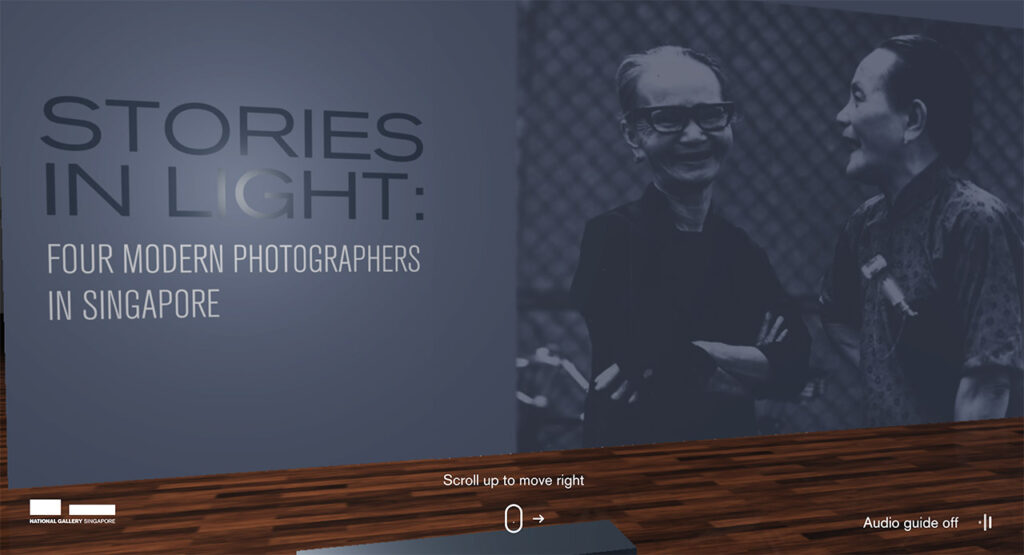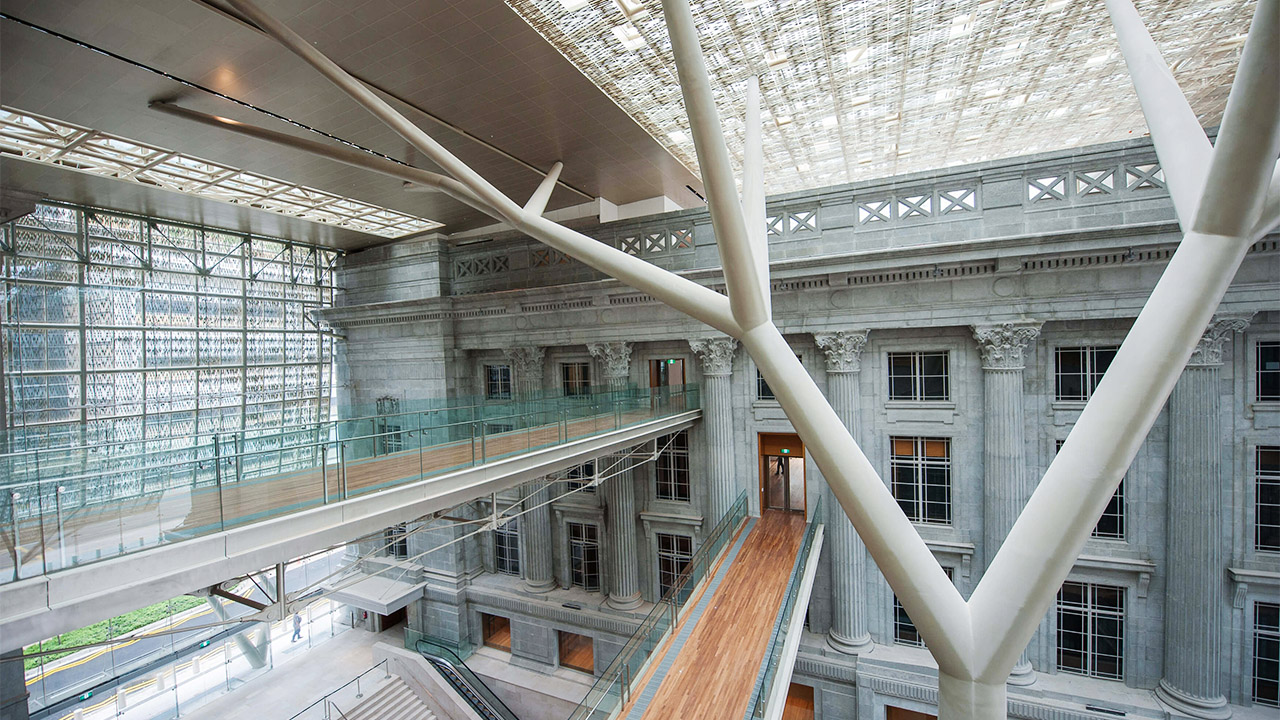Last year, the National Gallery Singapore (NGS) turned five. Through its relatively short lifespan, the institution, home to a sizable collection of contemporary Southeast Asian art, has been geared toward building a smart museum (or #SmartMuseum), powered by innovations that enhance the visitor experience. For example, its Gallery Explorer mobile app, developed in partnership with Accenture, aims to engage museum-goers with tours, games, and a Adopt Now feature; and its recently unveiled autonomous robot guide, TEMI, offers introductions to four artworks in its galleries.
At the heart of NGS’ tech push is its Y-Lab, an innovation incubator that partners with technology start-ups to design and develop projects to boost the museum visit. “The raison d’etre of Y-Lab is to accelerate cultural innovations from the gallery,” says Ernie Chen, Y-Lab’s Community and Project Manager. “In doing so, we discover a need for greater understanding of this potential new market for emerging technology. Thus, another major component of what we do is community-building to build awareness and promote collaborations in the sector.”

The Gallery Explorer app packs ticketing and wayfinding functionality with audio tours, games for kids, and an Adopt Now feature that helps raise funds for the institution. Image: NGS’ Gallery Explorer app
Some of Y-Lab’s projects are already integrated across NGS’ operations and exhibitions. The Gallery Explorer app? That’s Y-Lab in action. It also built the museum’s chatbot, an easily searchable tool on Facebook Messenger that provides visitors information on exhibits through artificial intelligence and guided conversations. The chatbot was deployed for 2017’s Colors of Impressionism exhibition and currently, for the retrospective on Singapore artist Georgette Chen.
Most recently, Y-Lab oversaw NGS’ digital offerings, including 360-degree virtual experiences and the virtual-only Stories In Light exhibition, which features interactive 3D environments and audio guides. And as Chen tells Jing Culture & Commerce, the Y-Lab has more innovative approaches up its sleeve.
Fill us in on the gallery’s virtual exhibitions over the past year.
More so during the pandemic, National Gallery Singapore intended to be accessible anywhere and at anytime, which resulted in our strategy of going phygital. Through our #GalleryAnywhere campaign, the idea was to communicate to museum visitors that they could still visit our exhibitions and program online. The 360 exhibitions were a natural process, and landing on the high speed and relatively low cost of Matterport as the 360 platform allowed the gallery to be agile.

Stories In Light, NGS’ first virtual-only exhibition, situates the work of four local photographers in immersive and interactive 3D environments. Image: National Gallery Singapore
How did the museum’s chatbot come about?
The origin of our first chatbot came from a National University of Singapore computer science student who joined one of our rarely offered museum innovation tours. He could see how we could better address his audience segment and proposed the idea of the chatbot to engage users like him. From there, we worked with internal stakeholders to co-develop the chatbot as an interactive layer to our Impressionist exhibition [2017’s Colours of Impressionism: Masterpieces from the Musée d’Orsay]. Facebook Messenger was chosen as a relatively easy and affordable platform to develop such open-sourced applications.
What have you noticed about visitor behaviors throughout the galleries?
The gallery aims to cater to a diverse range of visitor traits and preferences, and does not try to prescribe an ideal way of appreciating art. Based on our user observations with UX consultancies, we do notice that visitors will use their smartphones to complement their experiences with art. What’s interesting is that the primary experience tends to be physical first — looking, seeing, reading — and when the visitor wants to know more or capture the experience, they would whip out their phone.
While there are exceptions, this also led us on a behavioral insight that our initial idea of offering GPS-like wayfinding did not work well with our indoor environment; unlike the outdoors, there tends to be too many turns and floor-changing to make the experience worthwhile. That said, with around 10,000 active users per month for the Gallery Explorer app, it’s a fairly good testament that mobile (and perhaps in future, wearable) devices can add value to the art experience.
Are there any upcoming Y-Lab projects that you can share with us?
As mentioned above, we work with start-ups to build innovations for the sector. One of them is a crowdsourcing art metadata platform to enhance art appreciation with citizen engagement as catalyst. Then there is a mixed reality smart “torchlight” that projects context-sensitive content onto any surface. As these are projects in progress, they will take time to land on firm business applications.



